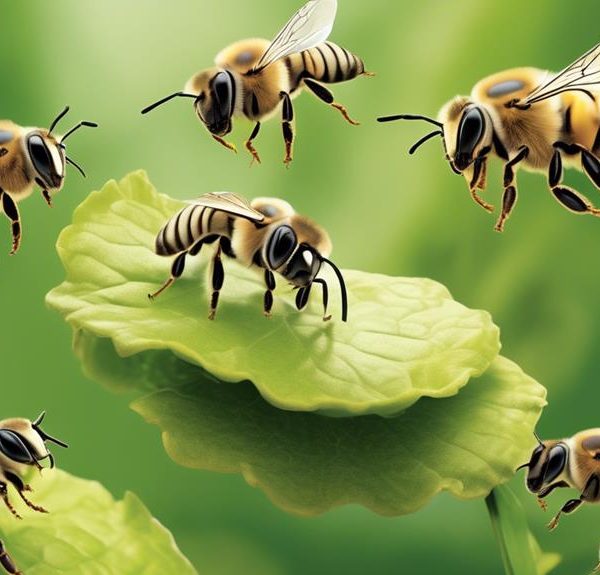Witness the fascinating world of leaf cutter bees and their critical role in our ecosystem, you'll be buzzing with curiosity to learn more.
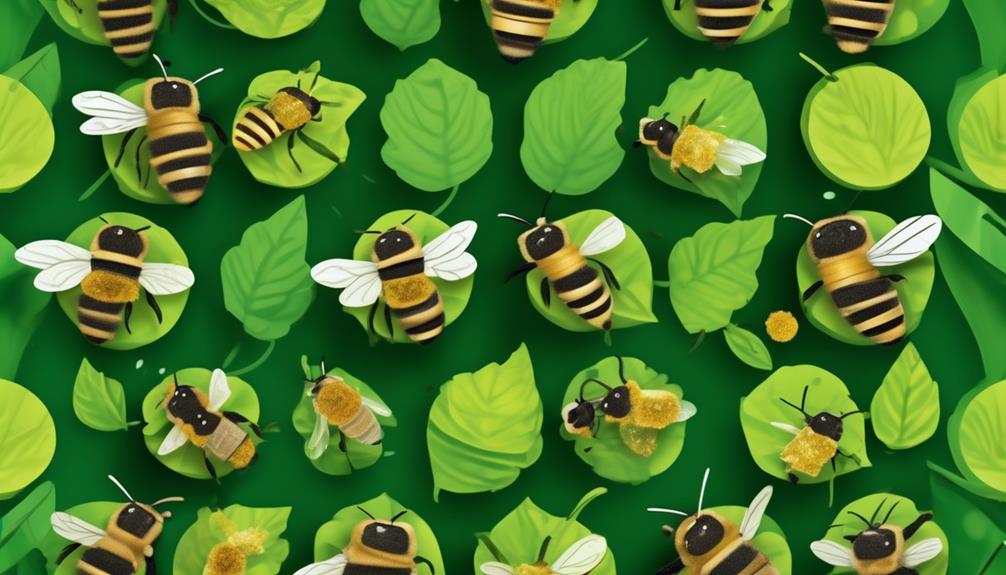
What Are Leaf Cutter Bees Used for?
Imagine a world without fruits, vegetables, or even coffee, sounds terrifying, doesn't it? Well, that's precisely what could happen without the tireless work of leaf cutter bees.
You might think they're just ordinary insects, but they're actually crucial players in our ecosystems. Their role extends far beyond merely buzzing around your garden, they're key pollinators in both wild ecosystems and agricultural settings.
As we explore the fascinating world of leaf cutter bees, you'll discover how these tiny creatures have a massive impact on our lives in ways you'd never expect. Stay with me, you're about to find out more than you ever thought possible about these industrious insects.
Key Takeaways
- Leaf cutter bees are important pollinators in both wild ecosystems and agriculture, contributing significantly to biodiversity and our food supply.
- They are essential for plant reproduction and food production, providing indispensable pollination services that significantly boost crop yields.
- Leaf cutter bees are less vulnerable to diseases compared to honeybees due to their solitary nature, making them valuable for farmers growing specific crops.
- They have a unique method of 'buzz pollination' and promote decomposition, nutrient recycling, and stimulate plant growth in ecosystems through their nesting habits.
Understanding Leaf Cutter Bees

Despite their unassuming appearance, leaf cutter bees play a vital role in our ecosystem, and understanding their behavior and lifecycle can give us valuable insights into the intricate workings of nature.
As the name suggests, these bees cut leaves, but not for food. They use leaf fragments to construct their nests, which they typically build in soft, rotting wood or in the ground.
Leaf cutter bees are solitary insects, meaning they don't belong to colonies like honeybees or bumblebees. Each female is a queen in her own right, building and provisioning her nest without help from other bees. This solitary lifestyle has significant implications for their reproduction and community dynamics.
One of the most fascinating aspects of leaf cutter bees is their role in pollination. As they flit from flower to flower, gathering pollen and nectar, they inadvertently transfer pollen grains from the male parts of the flower to the female parts, enabling fruit and seed production. This service is crucial for plant reproduction and food production. Thus, these tiny insects contribute considerably to biodiversity and our food supply.
Therefore, understanding leaf cutter bees isn't just an academic pursuit, but a necessity for sustaining our natural and agricultural ecosystems.
Leaf Cutter Bees in Ecosystems
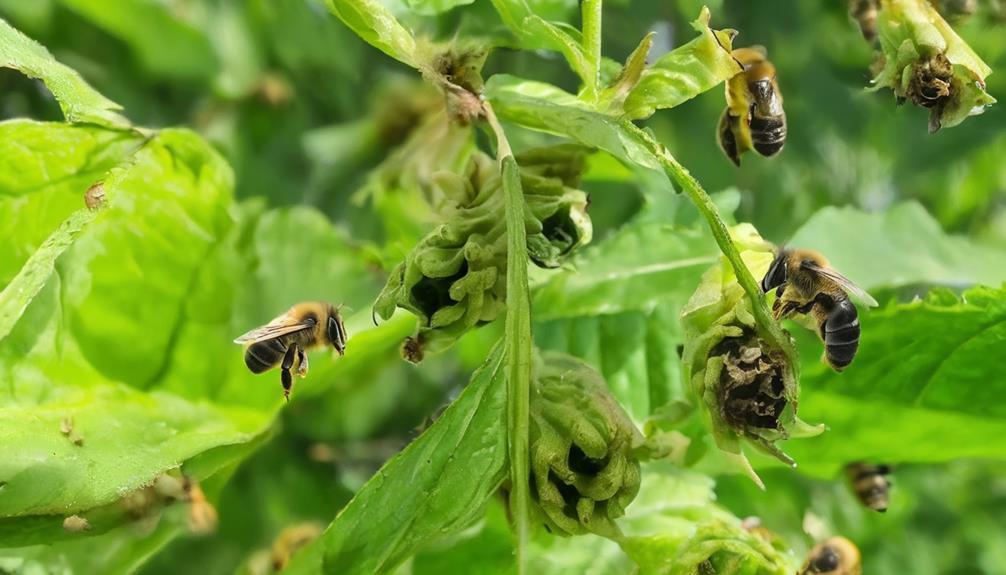
Building upon our understanding of their behavior and role in pollination, let's now explore the specific ways in which leaf cutter bees affect and interact within their ecosystems.
These bees play a significant role in biodiversity. They're essential pollinators, transferring pollen from male to female flower parts. Their unique method of 'buzz pollination' is particularly effective for certain plants. Unlike honeybees, leaf cutter bees vibrate their bodies at a high frequency, shaking loose pollen that's deeply embedded in the flower.
In addition, leaf cutter bees are eco-engineers. They create nests in dead wood or hollow stems, promoting decomposition and nutrient recycling within the ecosystem. The leaf fragments they cut for nest-building also stimulate plant growth by increasing sunlight penetration and reducing competition for resources.
Furthermore, they're part of the food chain, serving as prey for various birds and insects. This indirectly controls the population of these predators, maintaining a balance in the ecosystem.
Lastly, they contribute to soil health. Their burrowing habit aerates the soil, improving its structure and fertility.
Role in Agricultural Pollination
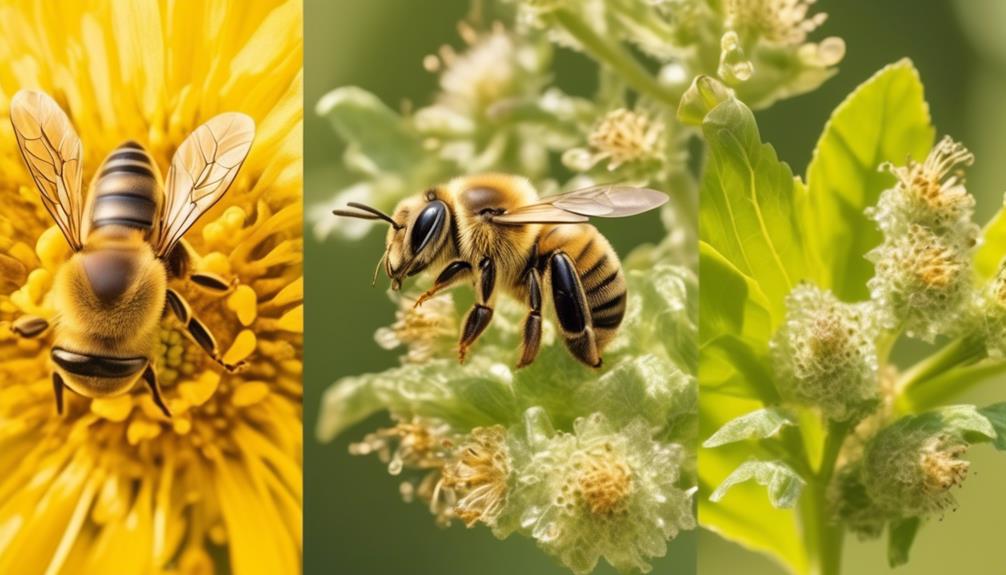
In the realm of agriculture, leaf cutter bees are unsung heroes, providing indispensable pollination services that significantly boost crop yields. Unlike honeybees, they're solitary creatures, each female creating her own nest. This independence means they're less vulnerable to diseases that can devastate entire honeybee colonies.
As you observe their labor, you'll notice their unique method of pollination. They carry pollen on the underside of their abdomens, which comes into direct contact with the stamen of every flower they visit. This 'belly brushing' technique is incredibly efficient, resulting in a higher rate of pollination per visit than their honeybee counterparts.
Their preference for specific plants, particularly legumes like alfalfa and clover, make them invaluable to farmers growing these crops. They're not deterred by the plant's complex flowers, which can be a challenge for other pollinators. Moreover, they're active during cooler and cloudier conditions when most bees stay in their hives.
Habitat and Lifecycle Insights
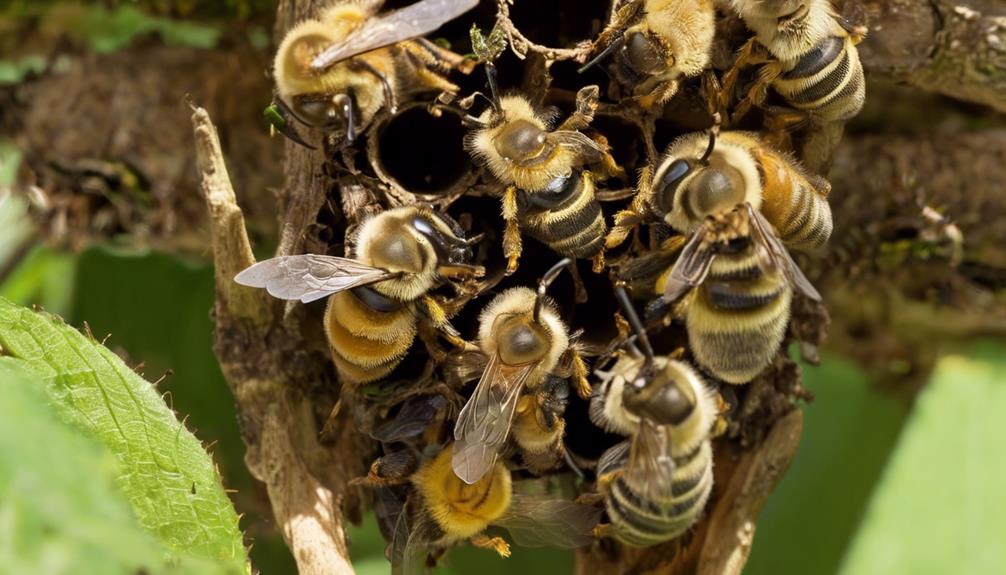
To fully appreciate the role of leaf cutter bees, let's delve into their habitat and lifecycle, both of which greatly influence their pollination habits. Leaf cutter bees are solitary creatures, preferring to nest in softwood or plant stems, rather than in hives like honeybees. You'll find them in a variety of habitats, from forests to human-made gardens. They're adaptable, thriving in both rural and urban settings.
The lifecycle of a leaf cutter bee is fascinating. After mating, the female bee starts cutting leaves and building her nest. She'll lay an egg in each cell of the nest, providing it with a food source of pollen and nectar, then sealing it off with more leaf cuttings. The larvae develop over the winter, emerging as adult bees in the spring.
Here's a simplified overview:
Stage | Duration | Activity |
|---|---|---|
Egg | 1-2 weeks | Resting |
Larva | Until winter | Eating and growing |
Adult | Spring onwards | Mating and nesting |
These insights not only deepen our understanding of leaf cutter bees, but also highlight the importance of preserving their habitats for the sake of pollination.
Tips for Encouraging Leaf Cutters
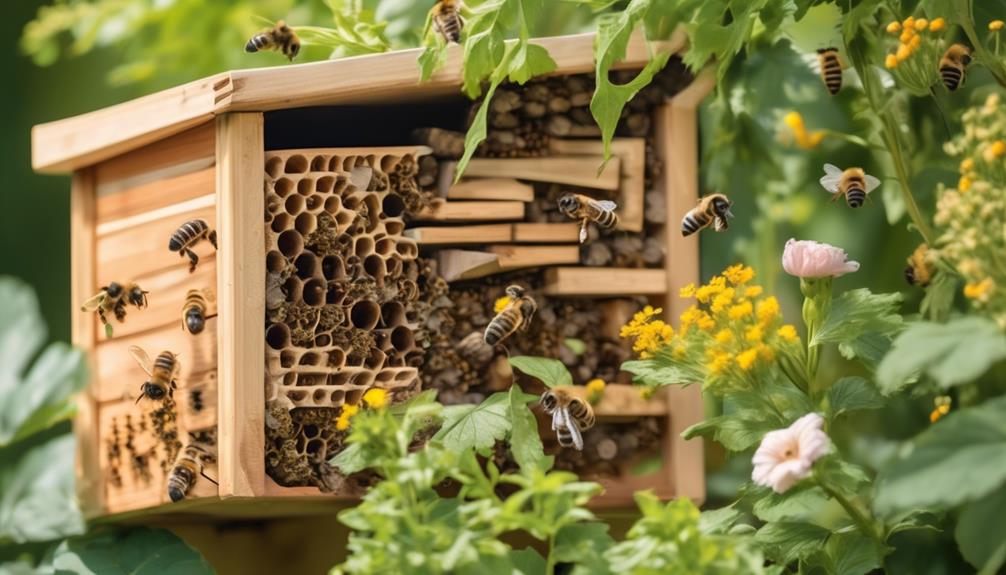
By creating a welcoming environment for leaf cutter bees, you're not only supporting their survival but also promoting biodiversity in your own backyard. Leaf cutter bees prefer habitats with a certain level of humidity, so place bee houses or nesting blocks in semi-shaded areas. The proximity to flowering plants is essential as leaf cutters are pollen-dependent.
You've got options when it comes to nesting materials. You can use drilled blocks of untreated wood, or even purchase commercially available bee houses. The holes should vary in size, from 1/8' to 3/8' in diameter, to accommodate different sizes of bees. Ensure there's at least one open end for the bee to enter and exit.
Leaf cutter bees are also attracted to certain plants, particularly those with thin, pliable leaves. Planting roses, green beans, or bougainvillea might make your yard more appealing to them.
Conclusion
You've seen how leaf cutter bees play crucial roles in ecosystems and agricultural pollination.
Their unique lifecycle and habitat preferences make them fascinating members of our environment.
By encouraging their presence, you're not just supporting biodiversity but also bolstering crop yields.
Remember, these hardworking insects aren't pests, but rather, vital allies in our quest for ecological balance and sustainable agriculture.

